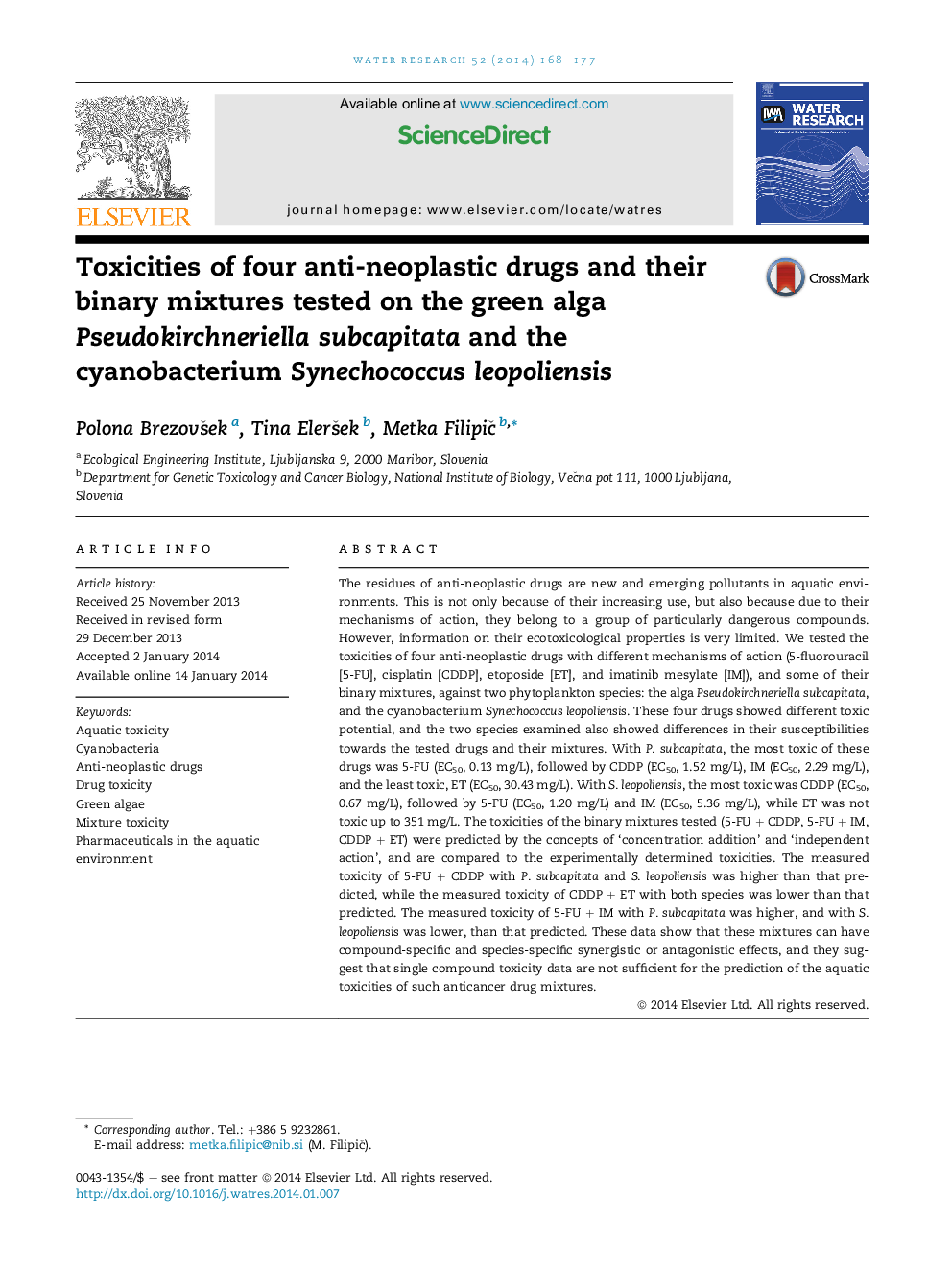| Article ID | Journal | Published Year | Pages | File Type |
|---|---|---|---|---|
| 4481672 | Water Research | 2014 | 10 Pages |
•Residues of anti-neoplastic drugs are emerging pollutants in aquatic environments.•Anti-neoplastic drugs can have differential toxicities in prokaryotes and eukaryotes.•Anti-neoplastic drug mixtures can have synergistic and antagonistic interactions.•Predicted no effect levels appear higher than predicted environmental concentrations.•Synergistic anti-neoplastic drug combinations can pose risks for aquatic ecosystems.
The residues of anti-neoplastic drugs are new and emerging pollutants in aquatic environments. This is not only because of their increasing use, but also because due to their mechanisms of action, they belong to a group of particularly dangerous compounds. However, information on their ecotoxicological properties is very limited. We tested the toxicities of four anti-neoplastic drugs with different mechanisms of action (5-fluorouracil [5-FU], cisplatin [CDDP], etoposide [ET], and imatinib mesylate [IM]), and some of their binary mixtures, against two phytoplankton species: the alga Pseudokirchneriella subcapitata, and the cyanobacterium Synechococcus leopoliensis. These four drugs showed different toxic potential, and the two species examined also showed differences in their susceptibilities towards the tested drugs and their mixtures. With P. subcapitata, the most toxic of these drugs was 5-FU (EC50, 0.13 mg/L), followed by CDDP (EC50, 1.52 mg/L), IM (EC50, 2.29 mg/L), and the least toxic, ET (EC50, 30.43 mg/L). With S. leopoliensis, the most toxic was CDDP (EC50, 0.67 mg/L), followed by 5-FU (EC50, 1.20 mg/L) and IM (EC50, 5.36 mg/L), while ET was not toxic up to 351 mg/L. The toxicities of the binary mixtures tested (5-FU + CDDP, 5-FU + IM, CDDP + ET) were predicted by the concepts of ‘concentration addition’ and ‘independent action’, and are compared to the experimentally determined toxicities. The measured toxicity of 5-FU + CDDP with P. subcapitata and S. leopoliensis was higher than that predicted, while the measured toxicity of CDDP + ET with both species was lower than that predicted. The measured toxicity of 5-FU + IM with P. subcapitata was higher, and with S. leopoliensis was lower, than that predicted. These data show that these mixtures can have compound-specific and species-specific synergistic or antagonistic effects, and they suggest that single compound toxicity data are not sufficient for the prediction of the aquatic toxicities of such anticancer drug mixtures.
Graphical abstractFigure optionsDownload full-size imageDownload high-quality image (257 K)Download as PowerPoint slide
